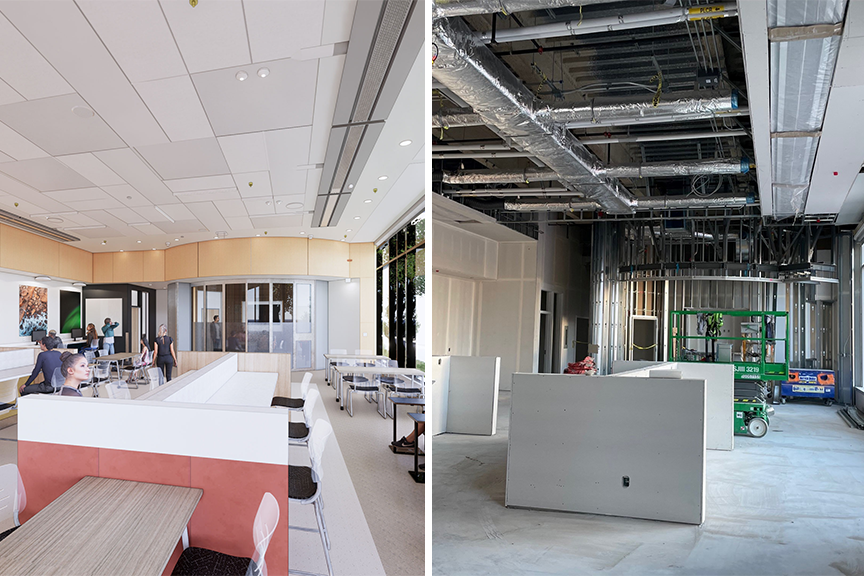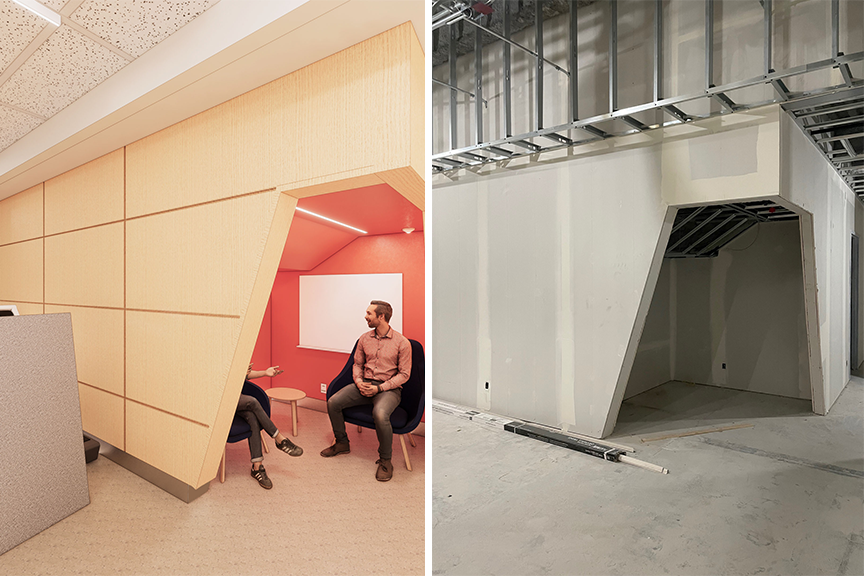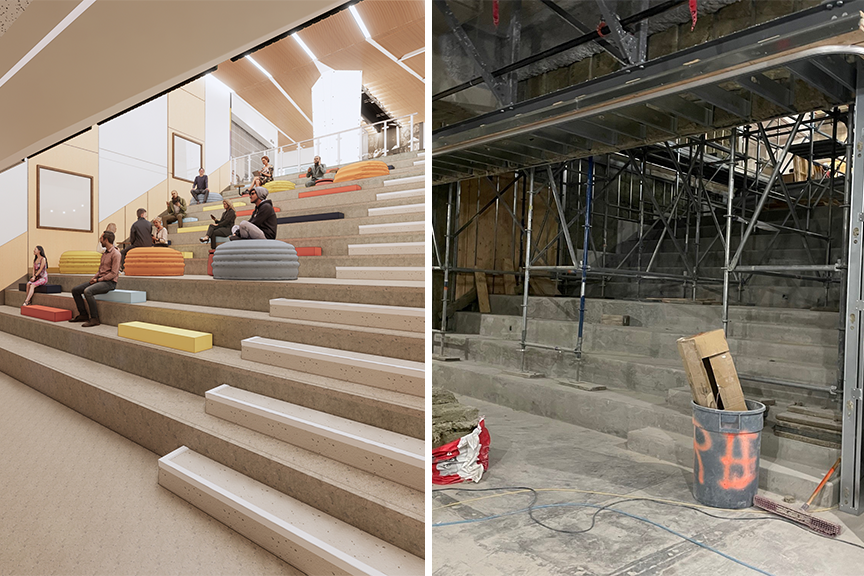University of Alberta Library is celebrating the new Geoffrey & Robyn Sperber Health Sciences Library, which is anticipated to open in Fall 2023. This post is part of a series that will showcase the Sperber Library over the next several months.
This post was written by Janet Koshuta, from Start Architecture

As architects, engineers, and designers, we are in a unique position to be able to articulate the quality of space in such a way that it reflects the value of the occupants. We experienced this while participating in the development of the new Geoffrey and Robyn Sperber Health Sciences Library, as the design process provided our team with an opportunity to connect the design solution back to the University of Alberta Library’s (UAL) vision for this space.
Our engagement with this project began with the development of a functional program – which defines the actual space required to support functional needs. This process really required the UAL team to think about their own Vision Statement and apply it to help define the space needs. Throughout this programming step, we were able to identify many key priorities for the new library. As the project was approved and moved into actual design solutions within the Edmonton Clinic Health Academy (ECHA), there was a need to connect the design outcomes to these key priorities. In this post, we outline how design and architectural solutions support some of these priorities.
Sense of Place
This Sperber Library will serve the needs of the university’s health sciences community, which extends to students, academics, health care providers and the public. The strategy to relocate places the library in a building with its own unique architectural language and organizational structure. A significant design challenge is to ensure that the library is defined by its own sense of place while retaining a clear sense of identity.
With its location at the north end of ECHA, the library will occupy space on the main and lower levels. The entry at the main level (near the Starbucks, of course) will activate the north end of the building even more than before. Taking cues from the architectural language of ECHA we introduce a new palette of materiality and colour, taking the vibrant, primary colours of ECHA and toning them down to a more natural palette and making a comfortable space for visitors.

We had the opportunity to work with Elders and Indigenous students to help provide an inclusive sense of place, acknowledging both culture and history while looking forward. The details are woven throughout the library through imagery and materiality, but particularly in a new Indigenous Learning space.
Human Connection
With a centralized service desk area, in line of sight from the entry, library staff will be both welcoming and accessible to all visitors. In addition, the subject matter librarians will have consultation space, accessed directly from the open study spaces, to meet with students and faculty to assist them with research needs.

Study Space
Carving out a variety of types of study spaces for students was a critical part of the vision and the number one priority. This has been accomplished in the Sperber Library – students will be able to convene and study in almost every nook and cranny. There are twice the number of group and solo rooms compared to the Scott Library. The design also respected the ‘collaborative, quiet and silent’ study zones that are prevalent at the library, providing varied options for students to gather and work. There is even a great space for people to work or study on the oversized stairs. This impressive feature was a challenge to achieve – cutting out a large portion of the concrete slab to open up and connect the main floor with the lower level. This will bring light and connectivity to the library and activate the space.

Technology
We all know that technology is ever-changing, and it is challenging to keep up with the latest advancements. To support future changes, the team placed an emphasis on developing robust and flexible infrastructure that will enhance immersive learning. This includes additional Wi-Fi connectivity throughout the library, connection to power receptacles in as many places as possible, flexible configurations for new and innovative equipment connections – in the ceiling, on the floor and in the walls. We have tried to think of everything!
New and exciting spaces will be available to create a podcast, experience virtual reality simulations, use new software, and print in 3D. These are just some examples of activities that have been considered and accommodated within the design of the new library. There are many, many more possibilities that will be available when the library opens later this year and well into the future.
When the new Geoffrey and Robyn Sperber Health Sciences Library opens later this year, please visit to see how the library’s vision has been represented in the design and details of the space.
Love us on the blog? Then you’ll love us on social media! Check us out at @uofalibrary on Instagram, & Twitter!
This content is licenced under a CC BY-NC-SA 4.0 Creative Commons licence.
